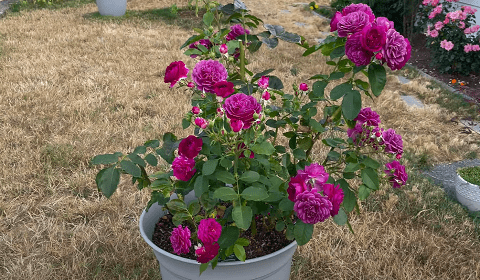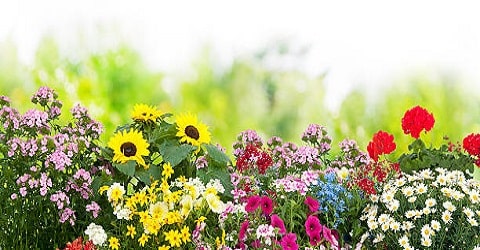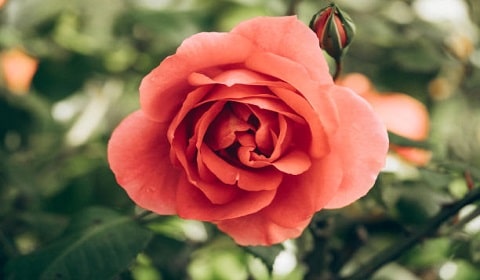Growing roses in pots offers a delightful solution for gardeners with limited space or those seeking to cultivate these elegant blooms in a controlled environment. With careful attention to soil, sunlight, and watering, roses thrive in containers, adorning balconies, patios, or even indoor spaces with their vibrant colors and sweet fragrance.
Whether you’re a novice gardener or a seasoned enthusiast, the versatility of pot-grown roses allows for creative experimentation with various rose varieties and arrangements. This method not only enhances the aesthetic appeal of any setting but also provides the joy of nurturing and witnessing the beauty of these timeless flowers firsthand.
Growing Roses in Pots
Roses, with their timeless beauty and captivating fragrance, have long been revered as symbols of love, passion, and elegance. While traditionally associated with sprawling gardens, roses can also thrive in containers, making them a perfect choice for urban dwellers, small spaces, or anyone looking to add a touch of romance to their balcony or patio. Growing roses in pots not only offers aesthetic appeal but also allows for greater control over their environment, ensuring optimal growth and bloom.
Here’s a comprehensive guide on how to grow roses in pots, turning your outdoor space into a blossoming sanctuary.
Table of Contents
1: Choosing the Right Roses
When selecting roses for potting, consider their growth habits. Climbing roses without support will sprawl, while grandiflora varieties may tip over due to their height and large blooms. Shrub, species, and older cultivars often outgrow containers. Hybrid tea roses are best suited for garden beds, as they struggle in pots. Select compact or patio varieties for container gardening, ensuring they match the container’s size and provide proper support.
Understanding each rose’s needs ensures successful potted growth, enhancing your space with vibrant blooms while avoiding the pitfalls of mismatched planting. Choose wisely to cultivate a flourishing and manageable container rose garden, which can include options like growing roses in pots.
However, there are four types of roses we suggest for your garden that are especially suitable for containers:
Ground cover: These plants are perfect for spilling gracefully over the edges of containers, adding a charming touch. Depending on your pot’s size and the specific ground-cover rose variety, you might even use it as a border around larger plants.
Miniature: These roses are specially bred to remain small in size, making them ideal for container growth. They bring beauty in a compact package.
Patio: For those seeking something larger than miniature roses but not as big as standard ones, patio roses are a great choice. They belong to the floribunda family but are bred to a smaller scale, perfect for container gardening.
Polyantha: This variety produces clusters of small roses on shorter plants. Just be sure to double-check the tag to ensure you’re getting a polyantha variety that doesn’t climb, as some do.
Read More: Best Rose Garden Ideas
2: What You’ll Need
| Equipment / Tools | Materials |
| Garden trowel, | Commercial potting soil |
| Gardening gloves, | Large pots or planting containers |
| Watering can or hose | Garden compost |
| Composted manure | |
| Bonemeal or blood meal | |
| Perlite, Gravel | |
| Rose plants | |
| Rose fertilizer |
3: Choose the Right Container
For optimal growth, select a sizable, tall pot, ideally 15 inches or more in diameter, when cultivating a rose bush. Deep-rooted roses benefit from ample space, favoring taller containers. Clay pots are preferable due to their slower heat transfer compared to plastic, which can potentially scorch roots. If plastic is the only option, opt for lighter hues to mitigate heat absorption.
Adequate drainage is essential, so ensure the pots feature sufficient holes at the base. These considerations foster a conducive environment for healthy rose growth, balancing root development, soil temperature, and moisture management in container gardening. Additionally, when growing roses in pots, it’s important to choose a suitable location that receives adequate sunlight and airflow.
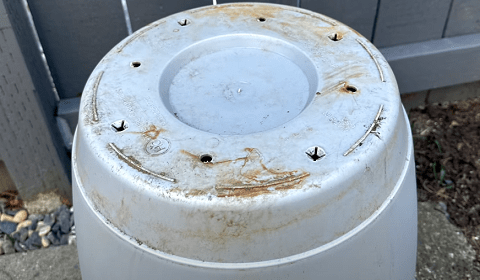
Read More: How to Grow Healthy Roses
4: Prepare Soil
Achieving the ideal environment for container gardening, especially with delicate plants like roses, demands a careful balance. Opt for a potting medium that strikes a balance between drainage and moisture retention, preventing root rot while ensuring adequate hydration. A mix of one-third commercial potting soil, one-third garden compost, and one-third composted manure forms an excellent base for growing roses in pots.
Enhance drainage by incorporating a cup of perlite and enrich the soil with a cup of bonemeal for essential nutrients. Optionally, supplement with fishmeal or blood meal for added nourishment, but exercise caution to avoid over-fertilization, which risks root damage. By meticulously crafting the potting soil mixture, you foster an optimal growing environment, promoting the health and vitality of your container plants, particularly prized roses.
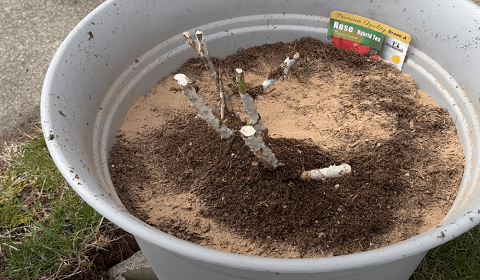
5: Planting
Fill your pot about two-thirds full with soil mix. If you’re planting a bare root rose, create a mound in the center of the pot, then position the rose over it and spread out its roots. For a potted rose, just make a slight indentation, take it out of the nursery container, and place it in the pot. If the roots seem tangled, gently loosen them up. Fill in around the rose with the remaining soil, pressing it down firmly. Make sure the soil surface sits just slightly beneath the bud union where the rose is grafted to the rootstock.
Now, find a spot for your potted roses where they’ll get at least seven hours of direct sunlight each day. If they’re on a patio or deck, you might need to move them around during the day to keep them in the sun. And if you have multiple pots, space them at least two feet apart for good air circulation. Additionally, consider growing roses in pots, as they offer flexibility in placement and care.
6: Water Thoughtfully
Once you’ve planted your roses, give them a good soak to ensure the soil is thoroughly moistened. Then, it’s important to keep an eye on them to gauge when they need watering. A handy tip is to check if the top inch of soil feels dry—it’s usually a sign that they’re thirsty. When it comes to potted roses, aim for soil that’s moist but not soggy, like the texture of a wrung-out sponge.
Growing roses in pots requires attentive watering to maintain optimal moisture levels. Avoid watering between 10 a.m. and 6 p.m., especially in hot weather when evaporation rates are high. Wet leaves can invite trouble, promoting issues like powdery mildew and other fungal infections, so try to keep water off them as much as possible. For container roses, consider using drip irrigation. It’s a smart way to ensure water reaches the roots directly, bypassing the foliage and reducing the risk of disease.
7: Fertilize as Needed
When you put a rose in a pot with limited soil, it tends to gobble up all the available nutrients pretty fast. Roses are voracious eaters, especially when confined to pots, needing more frequent feeding compared to when they’re planted in the ground, such as growing roses in pots. To ensure your plants get all the nourishment they need for healthy growth and abundant blooming, it’s best to use a balanced fertilizer specially formulated for roses every other week.
While any balanced fertilizer will do, those labeled as “rose fertilizers” or “systemic rose care” might contain extra stuff to fend off fungal diseases or pests. Follow the fertilizer instructions closely, as too much fertilizer can be just as harmful, if not worse, than not feeding at all.
Apply the fertilizer to the soil, avoiding the leaves unless directed otherwise, as the salts in fertilizers can scorch the foliage. It’s advisable to halt fertilizing about eight weeks before the expected first winter frost. This prevents the plant from sprouting tender new shoots that would likely get damaged by the frost.
8: Pruning and Maintenance
After nurturing your potted roses, including growing roses in pots, don’t overlook the vital step of pruning and maintenance. Regular pruning encourages healthy growth and abundant blooms. Trim away dead or diseased branches, aiming for an open center to improve air circulation. Remove spent flowers to promote continuous blooming.
Keep an eye out for pests and promptly address any issues. Water consistently, ensuring the soil remains moist but not waterlogged. Fertilize periodically to provide essential nutrients. With diligent pruning and care, your potted roses, whether grown in the ground or in pots, will flourish, rewarding you with their beauty and fragrance throughout the seasons.
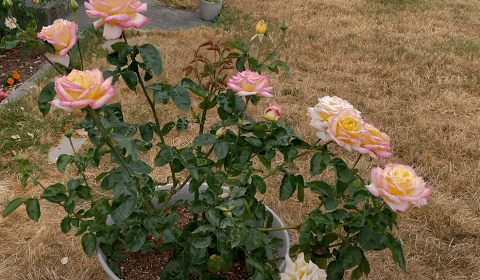
9: Protect From Freezing Temperatures
Every autumn, gardeners in colder regions must devise a plan to shield their container roses from the harshness of winter. Unlike their counterparts in the ground, potted plants are more vulnerable to the cold, making this step crucial for their survival.
To ensure your roses endure the winter in their pots, it’s advisable to opt for varieties rated at least two USDA hardiness zones colder than your own. For instance, if you reside in zone 6, opt for potted roses suitable for zone 4. Additionally, growing roses in pots can provide greater control over their environment, allowing for easier protection during the winter months.
To safeguard your potted roses, you have a variety of options:
Apply mulch: When faced with slightly colder temperatures than your plant’s rating, adding a layer of mulch on top of the container and gently mounding it around the pot can provide insulation. However, take care to keep the mulch away from the plant itself. Persistent contact with damp materials against the trunk or branches significantly heightens the risk of insect infestations or diseases.
Bury them: If space permits, consider digging a hole in your garden and placing the entire container inside it. Cover the soil atop the container with garden soil, ensuring it doesn’t come into contact with the crown where the plant meets the roots.
In regions with extremely cold climates, some gardeners construct insulating structures using chicken wire, straw, or dried leaves to protect the above-ground canes of their roses throughout the winter. While not the most visually appealing method, it can be effective in helping roses survive severe winter conditions.
Construct a cold frame: Although unheated, structures like cold frames or sturdy hoop houses can offer shelter, shielding your potted roses from winter’s harshness. This approach typically works well in moderately cold climates but may not suffice in areas with the most extreme winters.
Bring them indoors: If space and sunlight permit, consider relocating your roses indoors to your garage or home for the winter. Prior to the move, gradually acclimate the plant to its new environment to aid in its adjustment.
10: Address Pests and Diseases
Potted roses face many of the same challenges as their garden-planted counterparts when it comes to dealing with pests and diseases. One of the most common nuisances you might encounter is the aphid. These tiny insects tend to gather on the buds and leaves, sapping the plant’s juices and causing the affected areas to wither. If you notice aphids, a gentle morning spray with a hose can help dislodge them from the plant.
It’s important to do this early in the day so the rose has time to dry before temperatures drop, as excess moisture can lead to fungal issues and decay. Alternatively, you can painstakingly remove aphids by hand, though this can be quite laborious, especially if the infestation is severe. When growing roses in pots, be vigilant for signs of aphids as they can also affect potted plants and follow similar control methods.
In addition to pests, potted roses are also vulnerable to various fungal diseases such as powdery mildew and black spot. While there are fungicides available to combat these ailments, prevention is often the best approach. Ensuring adequate air circulation around the plants can significantly reduce the risk of fungal infections, thus promoting the overall health of your roses.
Making A Repot
If you’re thinking of keeping your roses in pots for the long haul, remember, they’ll eventually need bigger containers to stretch out their roots. Even if they don’t seem cramped, it’s wise to refresh the soil every couple of years to keep those plants thriving. Roses are quite demanding when it comes to nutrients, and they’ll gradually drain the soil of its goodness.
Growing roses in pots also requires attention to their container size, as they need adequate space to thrive. The prime seasons for repotting your roses are winter and early spring, when they’re taking a rest. It’s also an excellent opportunity to give their roots a trim if they’re getting tangled up.
In Conclusion, by following these guidelines, you can enjoy the beauty and fragrance of roses in pots, transforming even the smallest of spaces into a blooming paradise. With proper care and attention, container-grown roses will reward you with their exquisite blooms, adding charm and elegance to your outdoor living area.
So, roll up your sleeves, grab your gardening gloves, and embark on a delightful journey of growing roses in pots. Whether you have a sprawling garden or limited balcony space, cultivating roses in pots opens up a world of possibilities for gardening enthusiasts.
